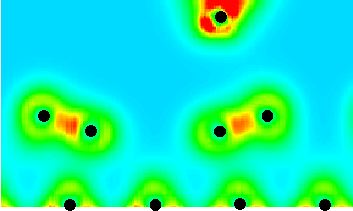
|
|
|
|
|
|
|
|
|
|
|
|
Flipping silicon dimers on Si(100) using scanning tip microscopy
State-of-the-art first-principles-calculations are performed to investigate the possibility of using a tungsten tip in scanning tunneling microscopy or atomic force microscopy as a tool to manipulate the surface atoms of Si(100). Calculations of total energy and electronic structure are used to study the energetics and bonding properties associated with the tip and surface for a variety of atomic configurations. The results predict that under certain protocols the tip can be used to flip dimers on the surface, from one buckled configuration to another, reversibly, and without inducing damage to either the intrinsic surface or the tip. The implications of these results for using the intrinsic (100) surface of silicon as an ultrahigh density memory storage medium approaching one bit of data per dimer are discussed in the papers.
